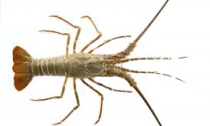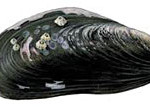
Lobsters, like shrimps and crabs, are decapods – literally meaning 10 legs – and can be found in all of the world’s tropical and sub-tropical seas as well as more temperate waters. They are predatory, nocturnal animals with a vividly decorated coat. They are often numerous locally; they linger in crevices (with their long antennae sticking out) during the day and hunt small benthic organisms at night, but they also feed on organic detritus whenever they happen across it. As with all crustaceans, the lobster moults or sheds its shell to grow.
Up until the end of the 19th century lobster was so plentiful that it was often used as fish bait. Sadly, with lobster’s ever-increasing popularity those days are now gone forever. Lobsters have recently suffered a dramatic demographic decline; intensive fishing has annihilated entire populations, especially where tourism abounds.
The marine lobster families that you may encounter as you dive around the world are the spiny rock lobsters, Palinuridae, the slipper lobsters,Scyllaridae, the reef lobsters Enoplometopus and the ‘true’ or clawed lobsters, Nephropidae.
The true reef lobsters, Nephropidae, with their enlarged pincers on the first pair of legs, include the European or common lobster, Homarus gammarus which can be seen in the waters of the region. The first pair of walking legs carries large but slightly unequal pincers that can be both formidable and dangerous. Take care!
Slipper lobsters, also known as Spanish or shovelnose lobsters, live on stony ground, in caves, and can also be found on muddy bottoms. They use the large spade-like scales at the front of the head to burrow into mud, sand or gravel between and under stones. It lacks the large claws of a true lobster, or the long antennae of spiny lobster. Instead it sports very short antennae and two large hinged scales or plates at the front of the shell. The carapace has a rough consistency
The Palinurus genus (frequently transcribed as Panulirus) is represented by numerous species in all of the world’s tropical and sub-tropical seas as well as more temperate waters. It is a predatory, nocturnal animal with a vividly decorated coat.
We are interested in monitoring numbers of all lobster species seen during your dive, and particularly the Crawfish or Crayfish (Palinurus elephas), which is also known as the European spiny lobster. This species is larger than the common lobster, growing to about 600mm in length. It has a stout, heavily armoured body. The carapace colour is usually orange with darker spines and white underneath but brown, sandy and purple specimens are occasionally found. It has numerous sharp spines on the carapace, over much of the abdomen and on the larger appendages. It has long antennae but small hooklike claws.
Crawfish are found on open exposed rock faces and rocky seabed in sub-tidal areas. Their numbers have been severely depleted on most coasts by tangle net fishing. Although this species was once widespread on western coasts of the British Isles, it is now becoming rather scarce.









Social Profiles